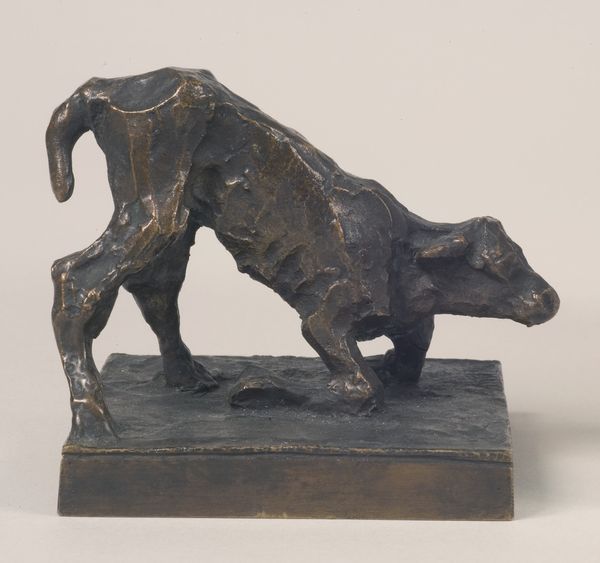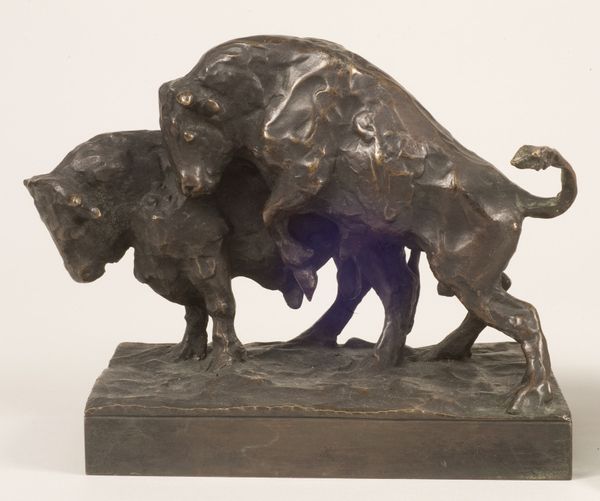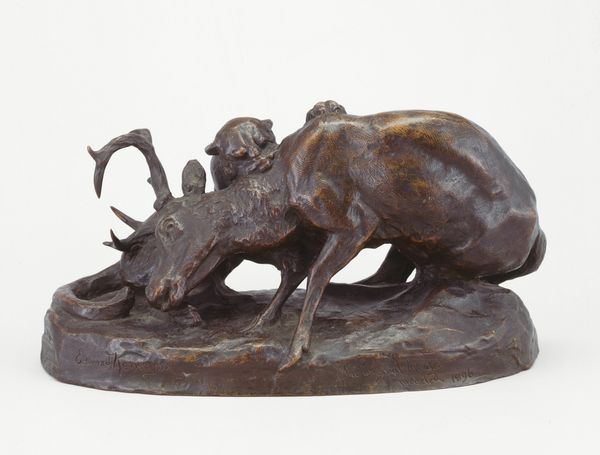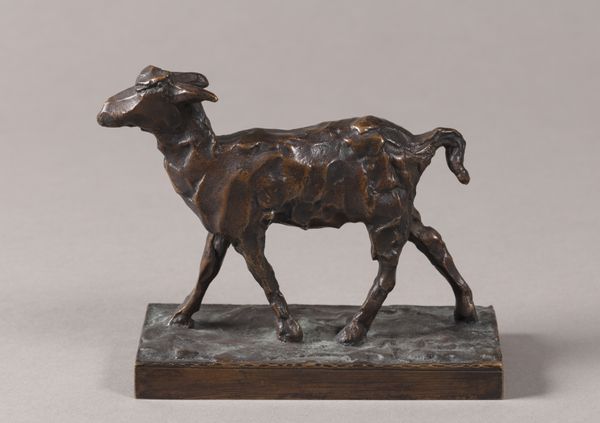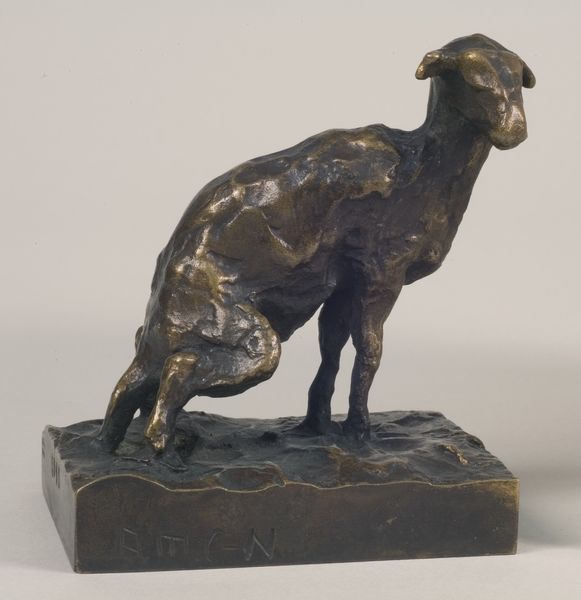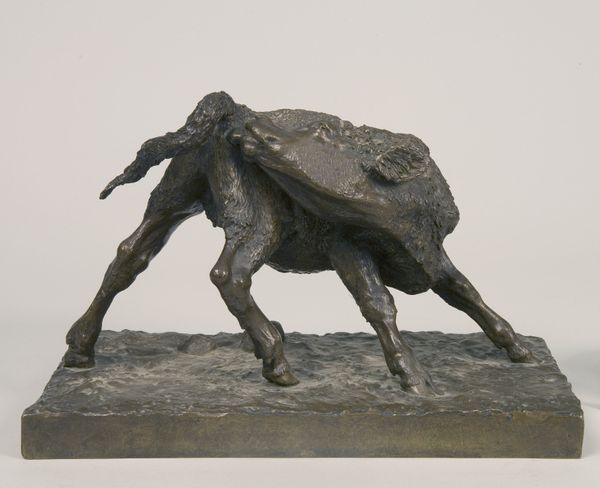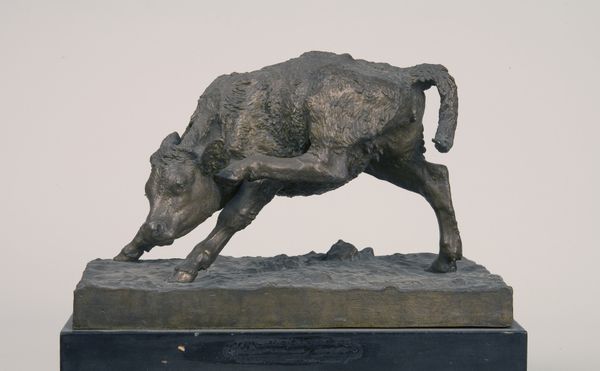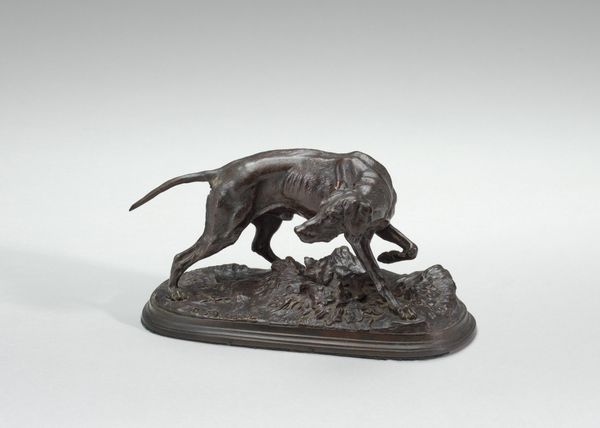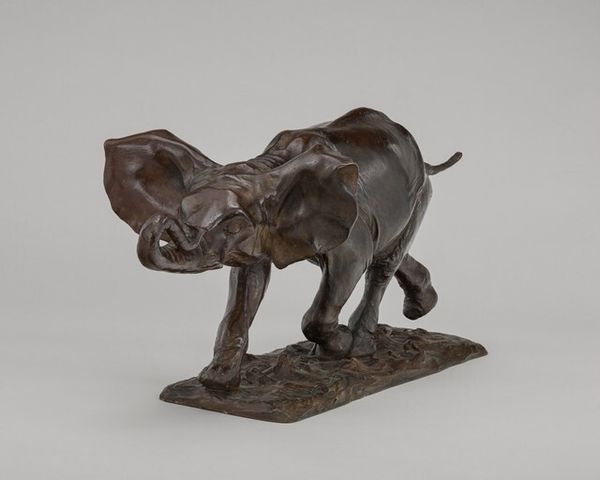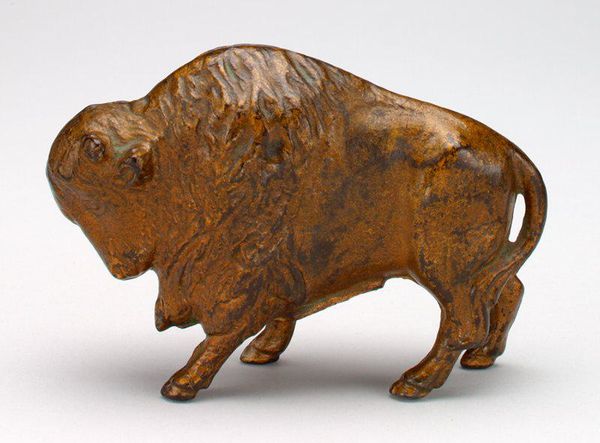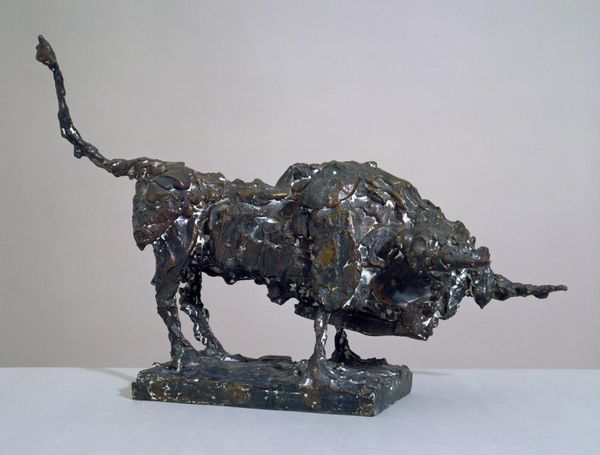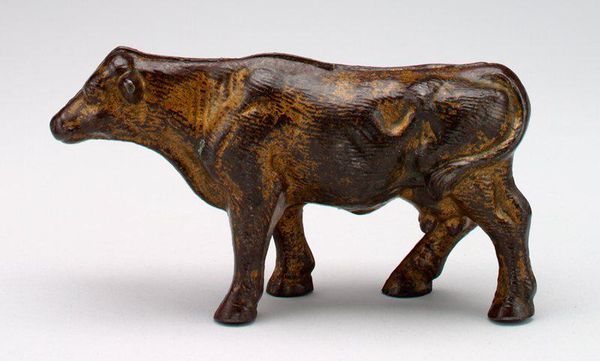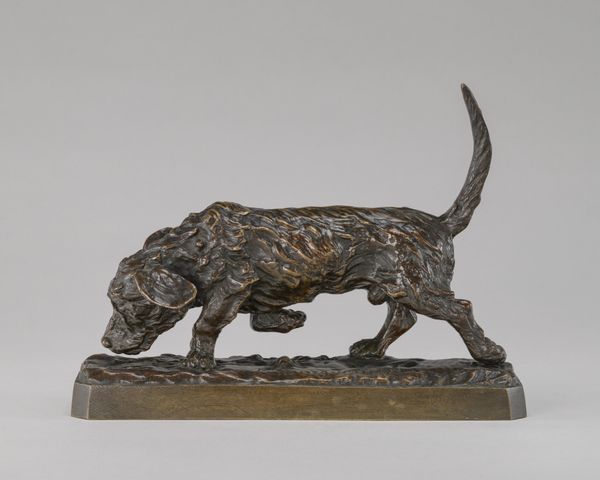
bronze, sculpture
#
animal
#
sculpture
#
bronze
#
figuration
#
sculpture
#
realism
Dimensions: 11.5 cm (height) x 18.5 cm (width) x 7 cm (depth) (Netto)
Editor: This bronze sculpture, "A Bull Pawing Sand," created by Anne Marie Carl Nielsen in 1896, has a weighty presence, even at this scale. It feels charged, full of contained power. What do you make of it? Curator: It’s fascinating how Carl Nielsen captures this sense of potent energy. Consider the bull itself. Since ancient times, the bull is an embodiment of virility, strength, and even divine power. In mythologies from Crete to Egypt, it represents fertility and untamed nature. Editor: So, by sculpting this, was she invoking those older ideas? Curator: Undoubtedly. Think of how she depicts the action of pawing – an assertion of dominance. But there’s also a nervous energy in the gesture. Is this bull about to charge or retreat? That ambivalence speaks to a deeper human understanding of power—it is both assertive and precarious. How do you feel that the sculpture addresses her own position as a woman sculptor working at the time? Editor: Interesting... so the power of the bull would implicitly extend to Carl Nielsen? Curator: In a way, yes. By imbuing it with nervous energy, Carl Nielsen presents a powerful symbol that speaks to the nuances of a complex selfhood within a patriarchal structure, and also to a psychological, restless power. Don’t you find it powerful how symbols can communicate layers of meaning? Editor: Definitely! I hadn't considered that connection before, but it really adds another layer to understanding her intent. Curator: Indeed, the visual symbol connects historical meaning to modern context, changing both, while also carrying personal weight and relevance.
Comments
No comments
Be the first to comment and join the conversation on the ultimate creative platform.
